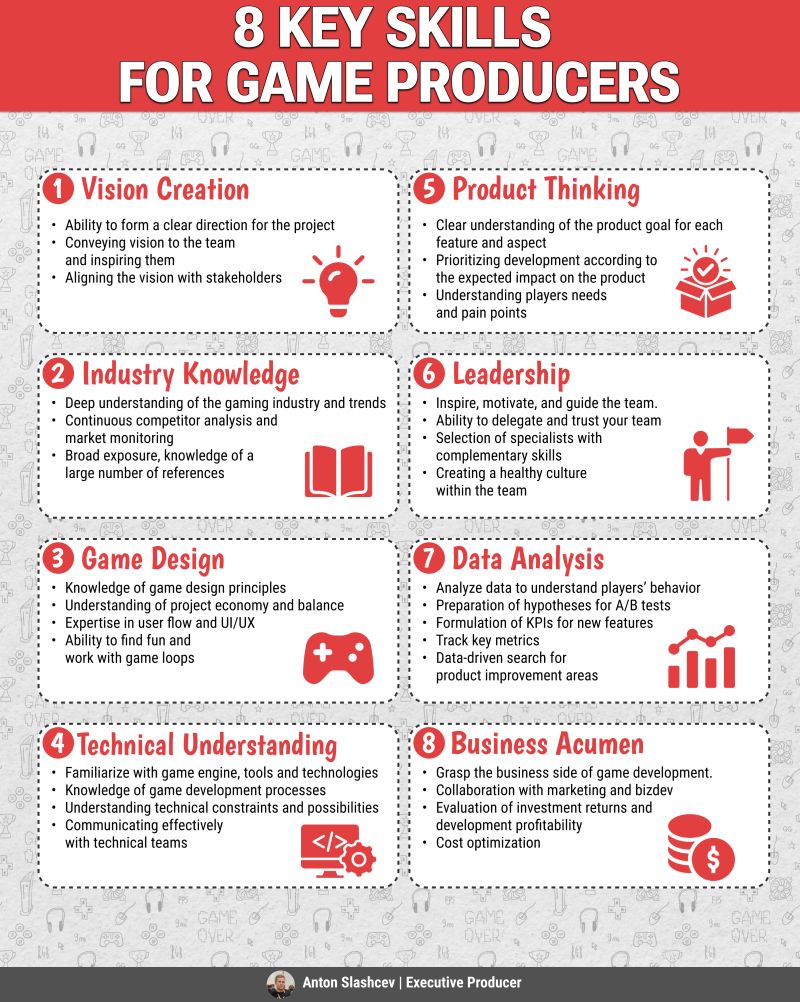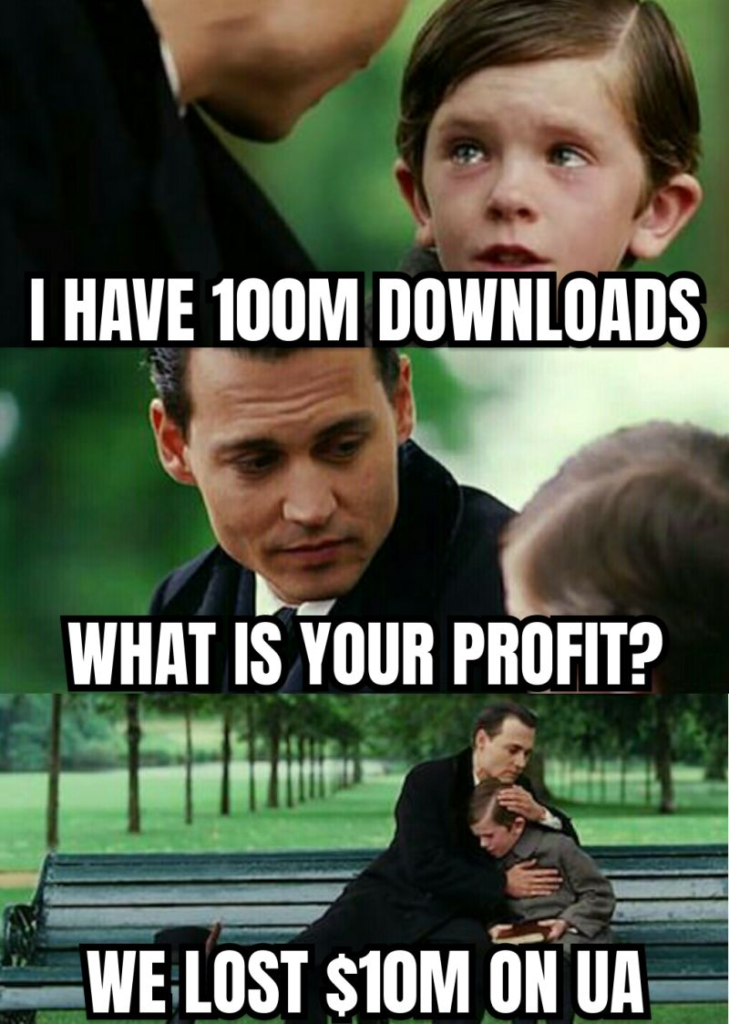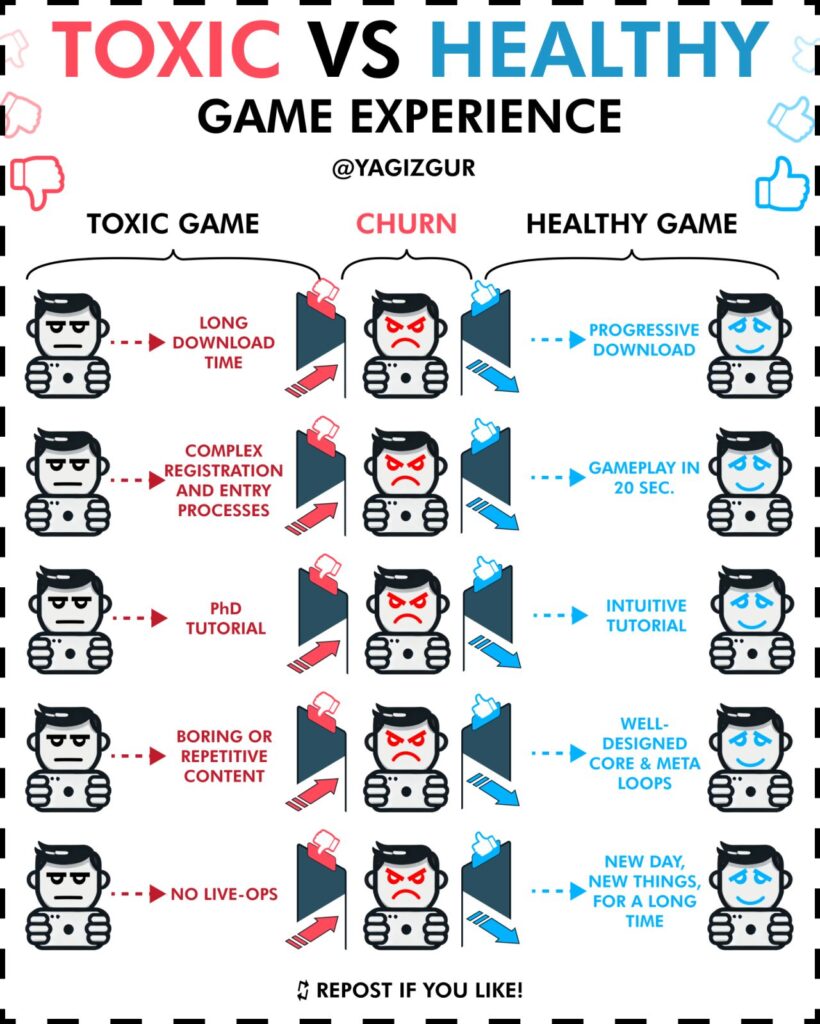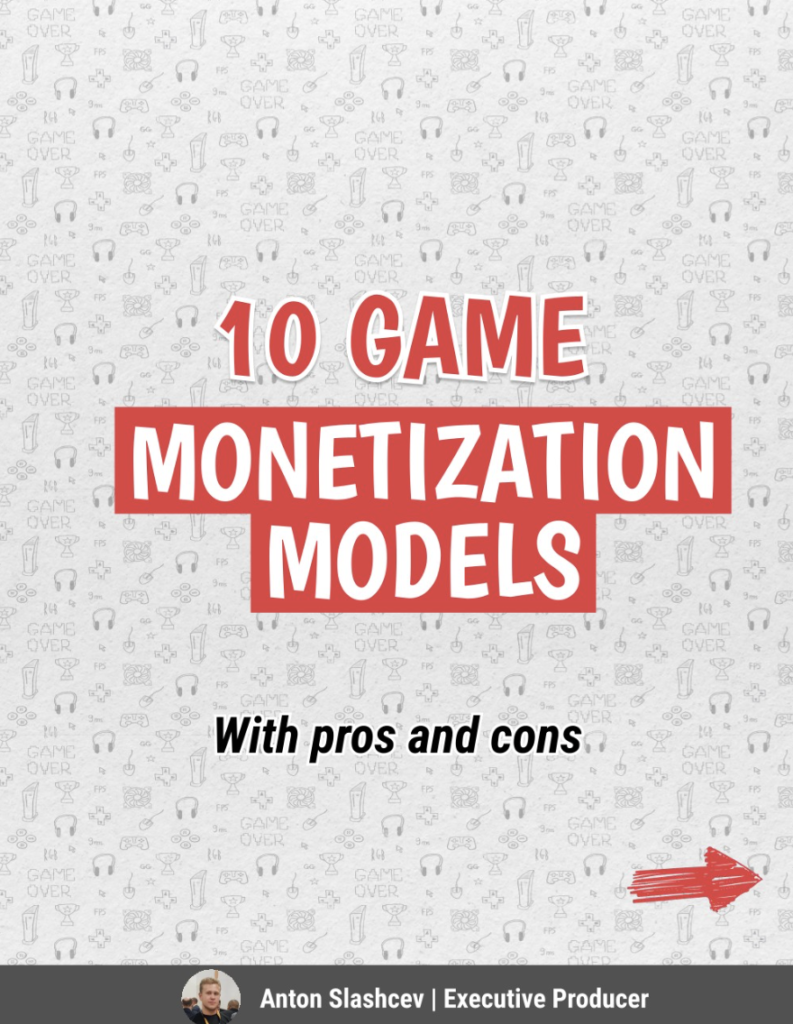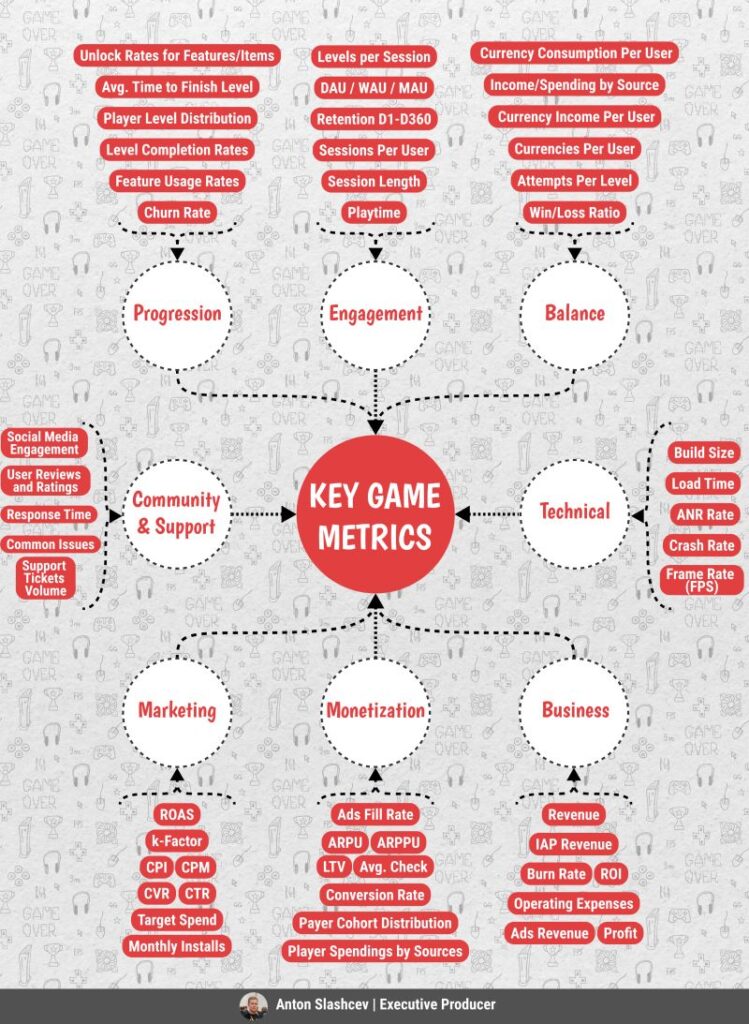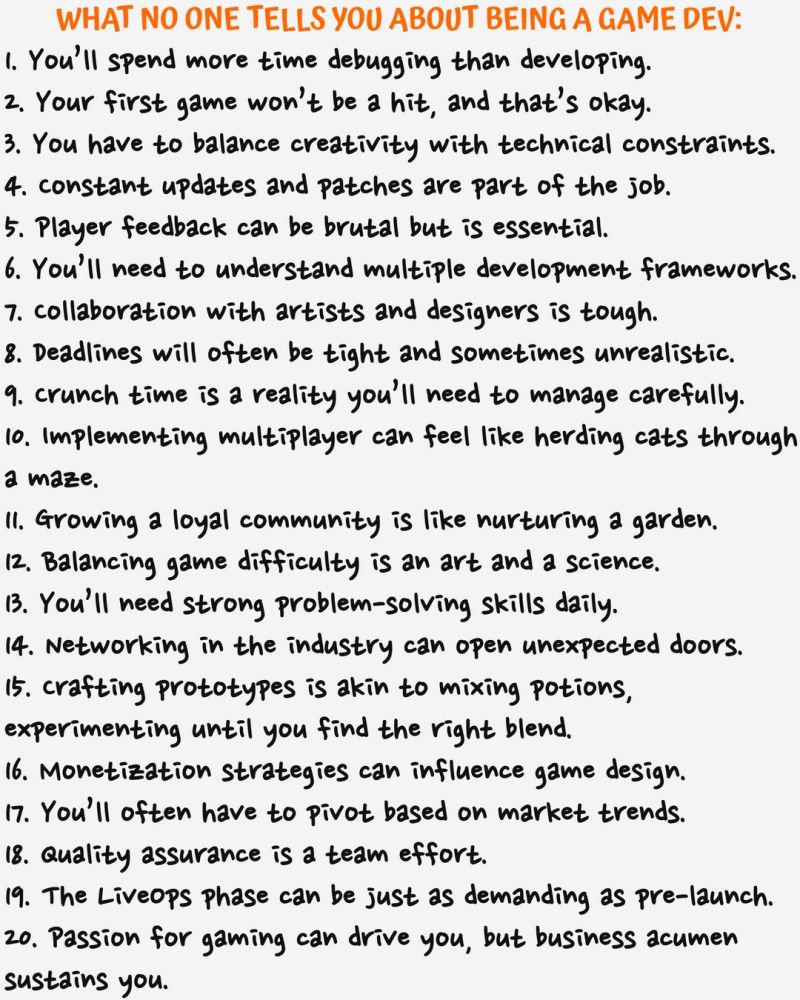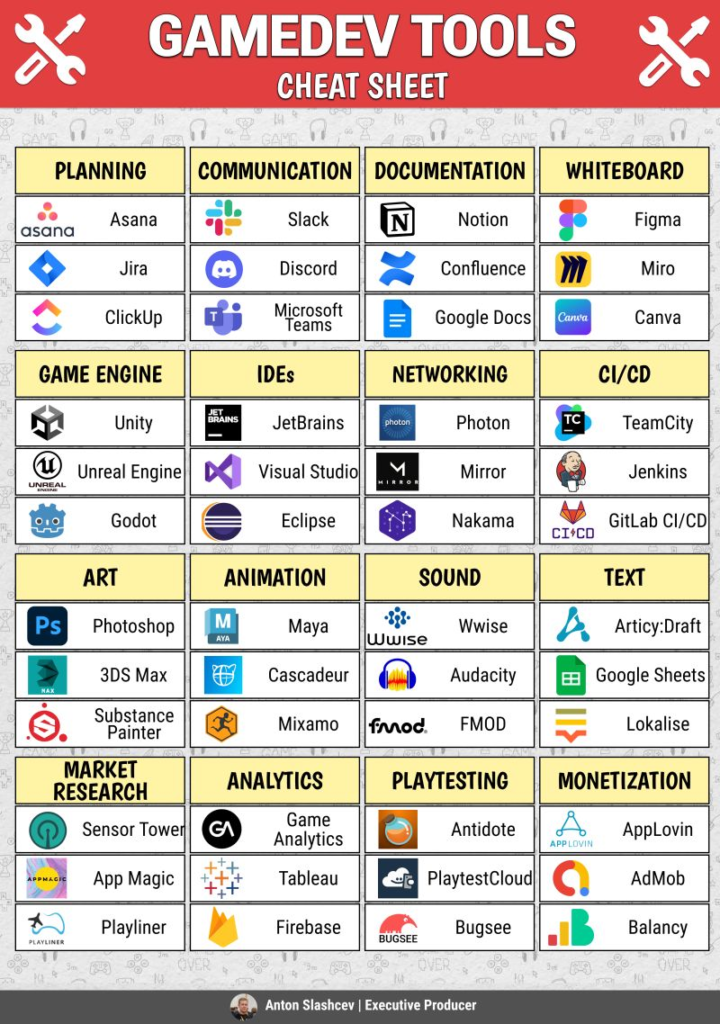8 Essential Skills for Game Producers
Master these to become a top producer: 1. Vision Creation 🌟 - Craft a clear direction for the project- Convey and inspire the team with your vision- Align with stakeholders 2. Industry Knowledge 📚 - Understand gaming industry trends deeply- Perform continuous competitor analysis- Be well-versed in a broad range of references 3. Game Design 🎨 - Master game design principles- Understand project economy and balance- Be skilled in user flow and UI/UX- Find fun and work with game loops 4. Technical Understanding 💻 - Familiarize yourself with game engines and technologies- Know game development processes- Understand technical constraints and possibilities- Communicate effectively with technical teams 5. Product Thinking 🧠 - Grasp the product goal for each feature- Prioritize development based on product impact- Understand player needs and pain points 6. Leadership 🏆 - Inspire, motivate, and guide your team- […]


